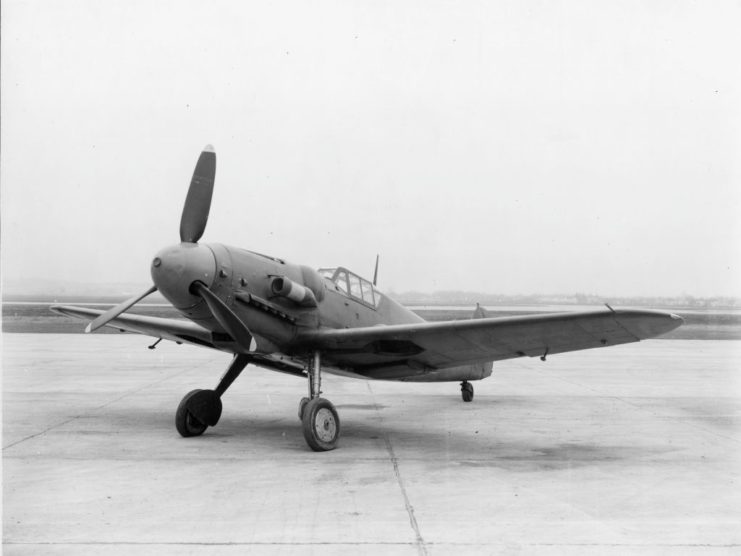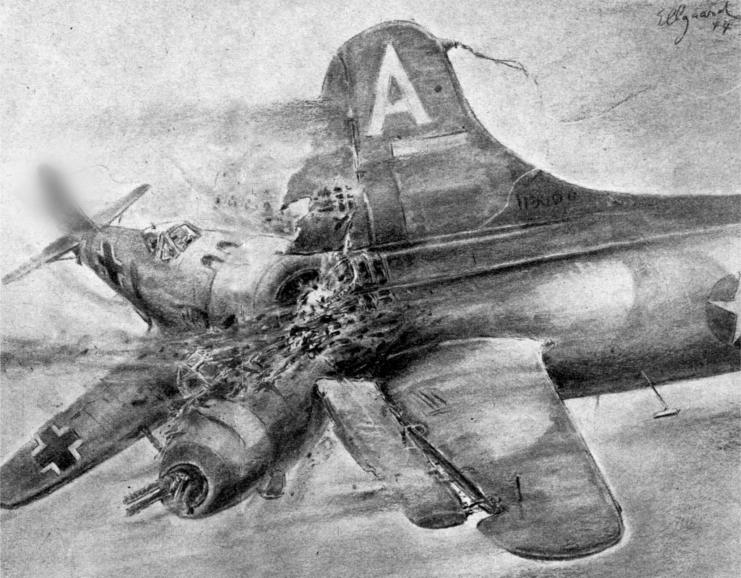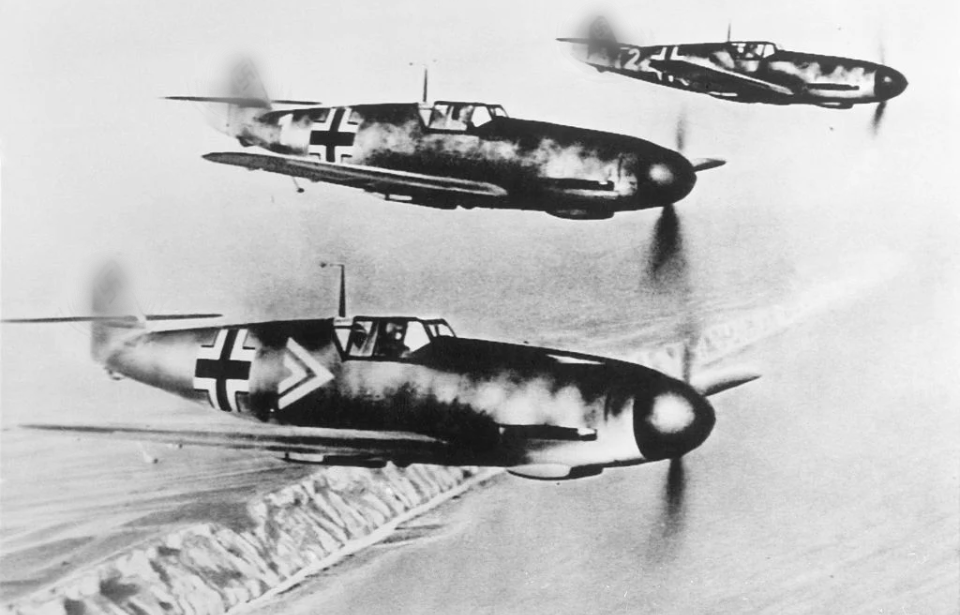Japanese kamikaze pilots were well known during the Second World War for their sacrificial bombing tactics against enemy naval vessels. They would put their aircraft in the right position before using them as human-navigated bombs, losing their lives in the process. Lesser known, however, were the German equivalent, who were deployed as the conflict was nearing its end and Allied aerial bombings increased. These men were known as Sonderkommando “Elbe.”
Allied air raids over Germany

What had enticed the Luftwaffe to create this force? Sheer desperation. By 1944, the Allies had increased their bombings of Germany, in an attempt to weaken the enemy’s forces, production efforts and morale. At the beginning of the following year, they launched numerous aerial attacks. In Dresden, the Royal Air Force (RAF) and US Army Air Forces (USAAF) collaborated to form a force of 1,200 bombers to launch four assaults in the city, killing over 25,000 people.
Shortly after, an RAF force of over 1,000 bombed Essen while the USAAF continued bombing German railways. They then began a lengthy attack on Berlin, using 1,221 Allied bombers and support fighters to defeat the defending Luftwaffe. These were just a few of the air raids launched by the Allies as the Second World War was coming to an end, with many of their other aerial forces being sent deep into Germany to attack airfields.
Forming Sonderkommando ‘Elbe’ as a last-ditch effort

It was in response to these attacks that the Luftwaffe decided to create an unconventional unit, Sonderkommando “Elbe.” It was led by Oberst Hans-Joachim “Hajo” Herrmann, a German pilot. Recruitment for this special force began toward the end of 1944, although training was limited, as the pilots only needed the most basic of skills to takeoff and control their aircraft.
Herrmann looked for a group of volunteers between the ages of 18-20 who’d be willing to ram their aircraft into the vulnerable areas of Allied bombers. If they were able, they’d bail out, but it could very well turn into a self-sacrificial mission. Most of the men who volunteered had grown up with war-era German propaganda and were willing to sacrifice themselves for the perceived cause, with their unit motto translating to “loyal, valiant, obedient.”
Flying the Messerschmitt Bf 109G

Herrmann’s goal for Sonderkommando “Elbe” was to put enough of these pilots in the air to cause the Allies to withdraw their bombers and regroup for a few months, allowing the Luftwaffe to do the same. To do so, they used the Messerschmitt Bf 109G, one of the most commonly-flown German aircraft.
Compared to normal Bf 109s, those flown by Sonderkommando “Elbe” were stripped of most hardware, to make them lighter, faster and easier to maneuver. They had little armor and weaponry, except for a single machine gun, usually an MG 131. Typically, the Bf 109G was equipped with four automatic weapons. In addition, the pilots were only given 60 rounds per mission, with the rationale being that, on a run that guaranteed death, they wouldn’t need more.
The one and only mission of Sonderkommando ‘Elbe’

Despite Herrmann’s desire to put together a large force, Germany simply didn’t have access to enough fuel. Instead, he ended up with 180 pilots, who were deployed on their first – and last – mission on April 7, 1945. On this day, the Allies left England with a force of 1,300 Boeing B-17 Flying Fortresses and Consolidated B-24 Liberators, on their way to attack oil and arms factories near Hamburg, as well as German airfields.
Out of the ordinary, however, was that they were met by the full force from Sonderkommando “Elbe.” The Luftwaffe‘s plan was to have their force of Messerschmitt Me 262s engage the Allied fighters, while the Bf 109Gs attacked their larger targets. Of the 180 pilots deployed, 120 successfully engaged the bombers. Of those, only 15 rammed their targets, and only eight Allied aircraft were destroyed.
Although the numbers were low, the initial effect Sonderkommando “Elbe” had on the Allies was immense. The bombers had no way of knowing they would encounter German kamikaze pilots. Once they realized what was going on, the plan no longer had the same effect. Both the bombers and accompanying fighters simply shot down any aircraft they believed were trying to hit them.
Notable Sonderkommando ‘Elbe’ takedowns

While the overall deployment of Sonderkommando “Elbe” was a failure, they achieved a number of successes throughout the assault on April 7, 1945. Unteroffizier Heinrich Rosner took out the lead B-24, Palace of Dallas, of the 389th Bombardment Group (Heavy) and survived bailing out of his Bf 109G. Similarly, pilot Heinrich Henkel took out the B-24 Sacktime.
The other pilots, however, were much less successful. Leutnant Hans Nagel shot down a B-17 from the 490th Bombardment Group, but was killed while ramming a second. Fähnrich Eberhard Prock also hit a B-17 and was able to bail out. However, one of the Allied North American P-51 Mustang pilots shot and killed him before he made it to the ground.
More from us: The Real-Life Men Behind the Characters of ‘SAS: Rogue Heroes’
Ultimately, the attack was a massive failure for the Luftwaffe, with the Allies destroying over 300 German aircraft. The following week, they took out an additional 700. Sonderkommando “Elbe” never flew again due to high losses of both pilots and aircraft.
